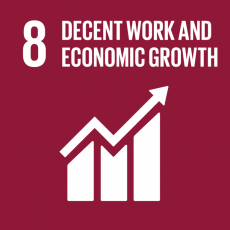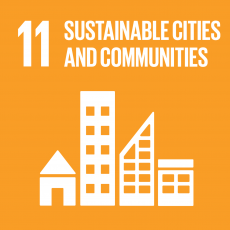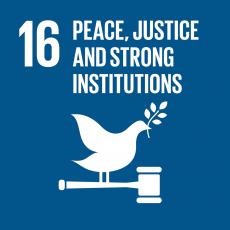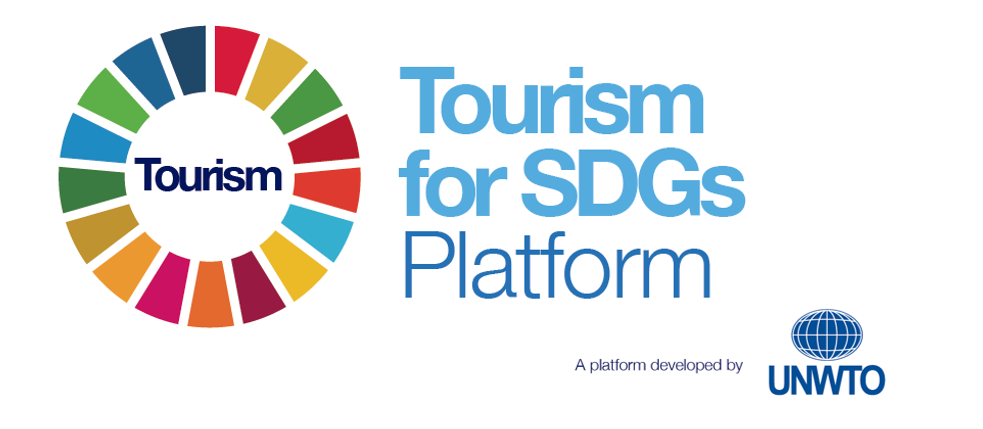The Via Francigena and Sustainable Development Goals
For many centuries the Via Francigena has been shaping its environment and influencing the well-being and quality of life of people and communities along the path. This clearly demonstrates that sustainability is an intrinsic quality of the Via Francigena. As expressed by the World Tourism Organisation (UNWTO), sustainable development must always take full account of its impact, present and future, on the economy, society and the environment.
In the context of the urgent call for sustainability, in 2015, all Member States of the United Nations (UN) came together to set a global policy agenda, divided into 17 objectives, known as Sustainable Development Goals (SDGs), to be pursued until 2030 and then revisited. The historic impact of the Via Francigena on its surroundings is today acknowledged and prized, featuring the EAVF’s contribution at the UNWTO Tourism4SDGs platform among other pioneering initiatives in the field of tourism.

Walking is a universally accessible way to stay fit, healthy and active. Hiking can be practised all year round and requires no physical training or special equipment.
The EAVF is committed to contributing to SDG n.3 “Good Health and Well-being” by promoting physical activity, raising awareness of healthy habits and engaging the public of all ages in outdoor events.
The Via Francigena offers a variety of leisure sports options, including hiking, cycling, equestrian sports, orienteering, marathons, etc. An active lifestyle can reduce the risk of coronary heart disease, diabetes, osteoporosis, obesity and other health problems. In addition, physical activity improves the digestive system, sleep quality and contributes to better mental health.

SDG n. 8: “Decent work and economic growth”: “Promoting sustained, inclusive and sustainable economic growth, full and productive employment and decent work for all”.
The flow of pilgrims along the Via Francigena generates economic benefits for local communities it passes through. The positive financial impact on the territory is noted in many statistical studies, as well as in the data collected by EAVF.
For example, an in-depth study by IRPET showed in detail how the Via Francigena supports territorial development in rural areas of Tuscany. Travellers revitalise rural settlements, stimulating economic vitality and a high quality of life in the area. Such areas would otherwise risk becoming “ghost towns” forgotten by entrepreneurs and tourists. Many facilities in these areas (be they accommodation, supermarkets or small bars) benefit from the continuous passage of walkers and cyclists along the Francigena route. Income and employment are diversified throughout the tourism sector, including all types of infrastructure, and grow in line with the number of pilgrims passing through.

SDG n. 11: “Sustainable Cities and Communities”: “make cities and human settlements inclusive, safe, durable and sustainable”.
In line with the target n. 11.4, the EAVF strengthens efforts to protect and safeguard the world’s cultural and natural heritage by promoting the hiking itinerary and cultural sites along the route. Slow tourism creates space for greater social and cultural exchange between travellers and locals, laying the foundations for deeper interactions and a greater understanding of regional cultural heritage.
The route allows the discovery of historical, religious, architectural and monumental sites that are not found on common tourist circuits. Enhancing this heritage is, for example, the primary objective of the EAVF ongoing work for the Via Francigena candidacy to the UNESCO World Heritage List or European projects such as rurAllure (2021-2023), which promotes museums and heritage in the rural surroundings of the route.

Walking and cycling are almost carbon-neutral activities, especially when compared to travelling by plane or fuel-powered private and public transport. However, the EAVF is committed to maximising its positive environmental impact by taking action and spreading knowledge about good environmental practices.
Awareness and connection to nature play an essential role in the environmental impact produced by society, as it influences our values and what we believe in and, consequently, all our actions. Various projects of EAVF members and partners contribute to raising environmental awareness, particularly that of climate change.
In addition, the Association works to develop effective partnerships that improve sustainable mobility and promote green tourism. For example, in 2017, an agreement was signed with Trenitalia and Trenord, which provides discounts for pilgrims travelling on regional trains as part of the route.

Over the centuries, the Via Francigena fostered intercultural dialogue between the countries it passed through, enabled the exchange of values and traditions, and transmitted cultural messages throughout Europe. In 1994 the EAVF was awarded the certification as a Cultural Route for its continuous work on facilitation of intercultural dialogue and dissemination of common European values, and since then the Association has been acting as a carrier network of the Council of Europe.
Recognised as a bridge between the cultures of Anglo-Saxon Europe and Latin Europe since the Middle ages, the Via Francigena is now a meeting point for different cultures, attracts visitors from more than 40 countries and builds up international community both en route and online. The intercultural dialogue is also developing through the interaction of hikers and local communities.
EAVF’s primary role is to create partnerships and match make a large number of stakeholders.
EAVF has more than 215 members and partners uniting municipalities, provinces and regions in 4 countries. In addition, the association builds strong relationships with associations, academic institutes and universities, small and medium-sized enterprises and international institutions such as the Council of Europe and UNESCO.
Partnership, dialogue and co-creation of results and projects are key governance strategies for sustainable development. EAVF’s more than 20 years of work testify that this form of cooperation offers ‘win-win’ solutions, i.e. mutual success between organisations, partners, pilgrims, local communities, the economy and the environment.
As defined by target 17.17, we aim to ‘encourage and promote effective partnerships in the public sector, between the public and private sectors and in civil society by building on the experience of partnerships and their ability to find resources’.



